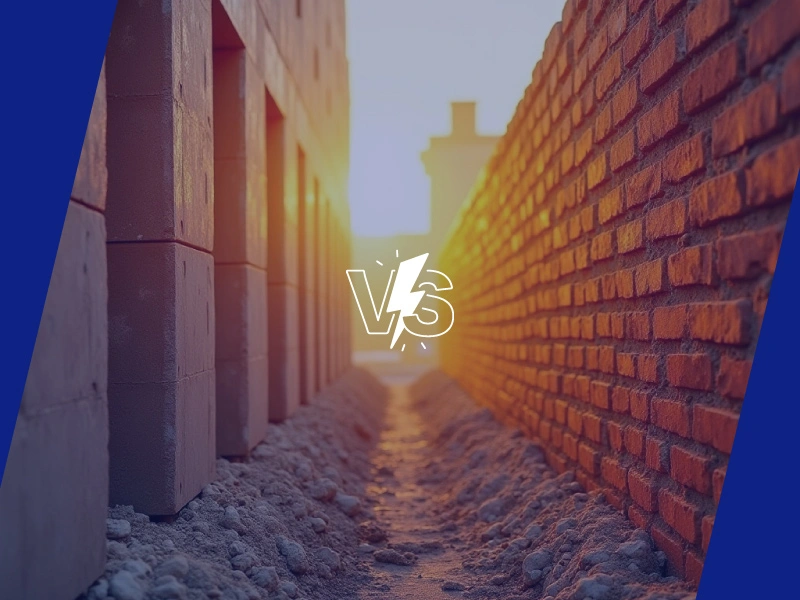Every construction project comes with one big question – “What’s the best way to build this?” Well, as they say, it’s all in the process. Time and again, the debate between precast construction and traditional cast-in-place construction gains the momentum in the construction sector. While precast and traditional cast-in-place processes each have their strengths, choosing between them isn’t always straightforward. The right choice depends on few things like your project’s needs, priorities, and constraints. So let us take a closer look at how these two methods compare across different aspects!
Technical & Functional Differences
The choice between precast and traditional construction affects the project timelines and overall efficiency. Factors such as weather dependency, structural durability, and ease of modifications-all play a critical role in determining the suitability of each approach.
| Factors | Precast Construction | Cast-in-Place Construction |
| Speed of Construction | Faster Prefabricated components reduce on-site time. | Slower Dependent on curing time and weather conditions. |
| Quality Control | Better Factory-controlled environment ensures uniform quality. | Variable Influenced by on-site conditions and labor skills. |
| Durability & Strength | Stronger Consistent quality leads to higher durability. | Variable Can be strong but prone to inconsistencies because of manual mixing. |
| Weather Dependency | Less Off-site production provides scope of all-weather work. | High Rain, temperature changes, and humidity can impact construction. |
| Flexibility & Customization | Limited Best for repetitive designs. | High Modifications and custom designs are easier. |
| Environmental Impact | Lower Reduced material waste and site pollution. | Higher On-site mixing causes more environmental disturbance. |
| Transportation & Logistics | Requires careful planning for transportation and crane lifting. | Not much transportation needed since materials are mixed and used on-site. |
| Repair & Modification | Difficult Altering / repairing components is complex. | Easier Adjustments can be made directly on-site. |
Financial Differences
Budget considerations often play a crucial role in choosing the right construction method. It is really important to understand the financial aspects of both these methods.
| Factors | Precast Construction | Cast-in-Place Construction |
| Initial Cost | Higher Requires mold setup, factory production, and transportation. | Lower On-site material mixing reduces setup costs. |
| Labor Costs | Lower Fewer workers are needed for installation. | Higher Requires more man-power for pouring, curing & finishing. |
| Long-Term Costs | More cost-effective due to reduced maintenance and faster completion. | Potentially higher total cost, extended timelines and repairs can add to costs. |
Other Key Differences
Apart from technical, functional and financial aspects, precast and traditional construction have several other important differences, that can impact the overall project.
- Safety and Workforce Requirements
Precast construction is comparatively safer in general, as most of the work is done in a controlled factory setting, which reduces any kinds of on-site risks. Traditional construction on the other hand, involves more manual labor, increasing the possibilities of accidents and injuries.
- Sustainability & Environmental Impact
Precast technology is more eco-friendly since it reduces total construction waste and optimizes material usage. Traditional methods generate more on-site wastage and cause environmental disturbances as well such as dust and noise pollution.
- Project Scalability & Suitability
Precast is way more efficient for large-scale projects that have repetitive designs, such as housing developments, bridges and commercial buildings. Traditional method works better for unique, small-scale, or customized projects where the design flexibility is really crucial.
- Maintenance
Precast structures mostly have better durability and lesser maintenance requirements because of the controlled manufacturing. Traditional structures may need more frequent repairs and maintenance due to variability in material mixing and exposure to different weather conditions during the construction.
Conclusion
Both Precast and Traditional construction methods have their own advantages and drawbacks however it is safe to say that for the projects that are large-scale and require more efficiency, precast is better choice. On the other hand for highly customized or budget sensitive projects, traditional construction remains the better choice. The right choice ultimately depends on the project’s scale, design requirements, total budget, and long-term goals. Finding the perfect balance between these methods will be key to optimizing future projects.
